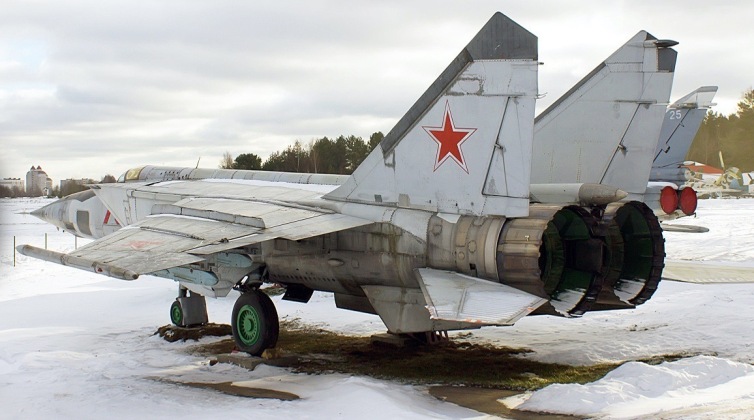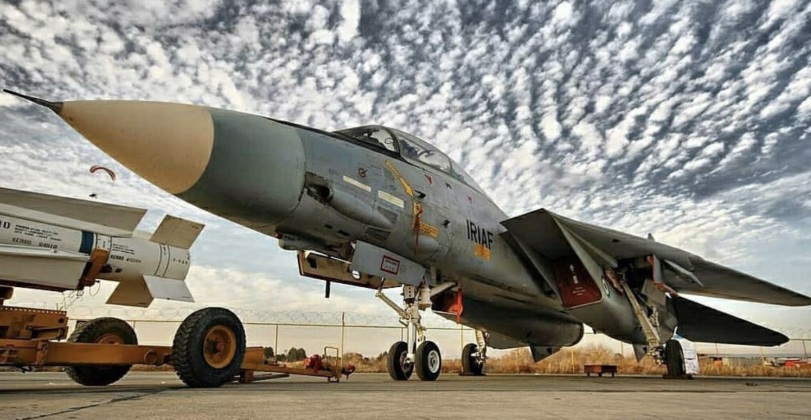News
Attacking an Airbase Guarded By American F-14s: The Soviet MiG-25RB ‘Strike Foxbat’ Left Defenders Helpless
The MiG-25 Foxbat heavyweight interceptor began to be deployed for frontline operations by the Soviet Air Force in 1970, and proved extremely difficult to neutralise in multiple engagements with Western built aircraft and air defences. From 1971 Soviet-flown Foxbats outfitted for reconnaissance would fly over the Israeli-held Sinai Peninsula, which was as heavily fortified as the best defended parts of Western Europe facing the Warsaw Pact and was guarded by large numbers of F-4E Phantom interceptors, AIM-7 air to air missiles and MIM-23 air defence systems. These would all prove impotent against the Foxbat, despite the F-4E having been by far the most capable Western fighter jet operational at the time. Soviet flights also saw MiG-25 units fly over Israel itself where they similarly proved immune to targeting, raising serious concerns in the Western world.
Export variants of the Foxbat, although usually less capable than those in Soviet service, proved similarly invulnerable. MiG-25s would perform similar overflights of Pakistani territory in Indian hands, with Pakistan’s defences failing to even detect them for several years. When the Indian Air Force later used Foxbats to create sonic booms over Pakistani cities, the Pakistani Air Force’s state of the art F-16 fighters proved totally incapable of threatening the Soviet-supplied jets. Even when the U.S. Air Force, deploying advanced F-15C Eagle fighters and benefiting from massive support from E-3 AWACS aircraft to guide their missiles to their targets, it only achieved hits on two Iraqi MiG-25s during Operation Desert Storm and failed the large majority of interception attempts. Iraq MiG-25s, despite being export variants, outnumbered, and operating without any AEW&C support, neutralised two American fighters – an F-18 and an F-15.

Although the F-15C was the most capable fighter in air to air combat fielded by any Western Air Force, the jet which would pose the greatest threat to the MiG-25 was the heavier and much more expensive F-14 Tomcat which was fielded exclusively by the U.S. Navy and the Iranian Air Force. Iran had acquired the F-14 specifically with countering Soviet MiG-25s in mind, with the American aircraft integrating a much more powerful sensor suite and faster and longer ranged air to air missiles allowing them to more seriously threaten the very fast and high-flying Soviet jets. Even the F-14, however, when put to the test against the MiG-25, seriously struggled to threaten the aircraft, with its long ranged AIM-54 missiles failing in most cases to hit their targets despite a very high success rate against other aircraft classes. The first ever engagement between the two, which saw an Iraqi MiG engage an Iranian Tomcat, saw both hit but fail to bring down the other.
According to a number of Western and Iranian sources, near the end of the Iran-Iraq War the Soviet Air Force would deploy its own more advanced MiG-25 variants to Iraqi territory to test their capabilities against Iran’s state-of-the-art American-supplied defences. While the Foxbat traditionally relied on its very high speed and operational altitude, and a good flight performance when flying high, to evade missile attacks, the new Soviet MiG-25BM variant focused more heavily on electronic attacks to soften enemy defences. If Soviet Foxbats could comfortably overcome Iran’s F-14s, they would have a very good chance at defeating the latest NATO defences in Western Europe which relied exclusively on lighter aircraft with smaller radars and much shorter ranged missiless such as F-15Cs and F-4Es.

While the MiG-25 was a third generation combat jet, and was thus a generation behind the F-15 and F-14 which entered service later on, the MiG-25BM variant was in many respects the most sophisticated and integrated fourth generation level sensors, armaments, avionics and electronic warfare systems. The aircraft was an extensive modification of the Foxbat airframe to serve in an entirely new role, namely the suppression of enemy air defences and conducting of beyond visual range air to ground strikes. To this end, the aircraft integrated the Jaguar anti radar system and the Syren-1D-OZh and Lyutik active jamming systems for electronic warfare, while being equipped with the avionics needed to employ Kh-58 anti-radiation missiles designs specifically to neutralise air defence assets at long ranges. The Kh-58 had a range of up to 250km, depending on the variant, and was extremely difficult to intercept due to its high Mach 3.6 speed. The Foxbat design had matured considerably by the mid-1980s, and new variants such as the MiG-25PD built for air to air combat as well as the MiG-25BM were a full generation ahead of the baseline early 1970s Foxbats in terms of avionics.

Soviet MiG-25BMs were reportedly deployed to target Iran’s Mehrabad Air Base, quite possibly the best defended military facility in the Middle East, which was protected by 15 fully operational F-14s armed with AIM-54 missiles, as well as F-4E Phantom fighters and an air defence network comprised of American-supplied long-range surveillance radars and MIM-23 Hawk surface to air missiles. Prior Iraqi attempts to attack Mehrabad had been met with failure and heavily losses, with its MiG-23BM and Su-22 fighters both forced to give the F-14s a wide berth. With the exception of the Foxbat, the F-14’s capabilities left all other Iraqi combat aircraft at an overwhelming disadvantage with the fighters responsible for far more anti aircraft than all other Iranian assets in the air, on land and at sea combined. The fact that Iran was concentrating so many of its scarce F-14s at Mehrabad made it a far more challenging target than any other Iranian facility, and was a testament to the facility’s tremendous importance.
Continued in Part Two












